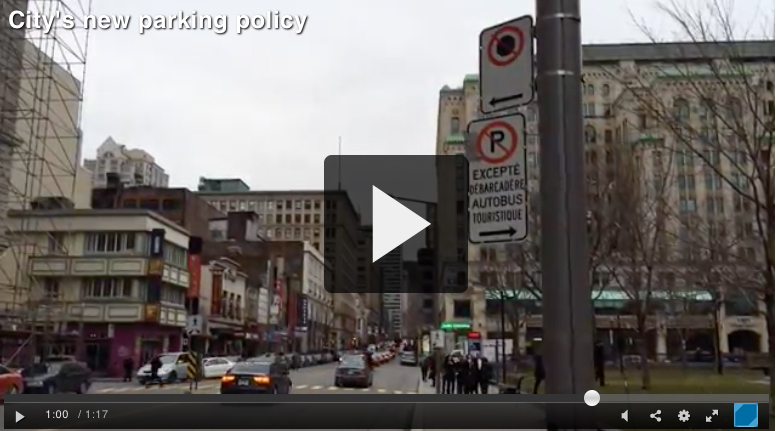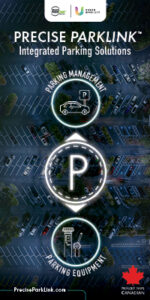The Canadian Parking Association offers its members a one-stop-shop for learning about this dynamic industry and networking with the industry’s foremost experts on all aspects of parking. Dedicated professionals invite you to learn more about the benefits of joining the Canadian Parking Association.
FOR IMMEDIATE RELEASE
Contact: Becky Collins
Tel: 612-331-2020 ext. 6188
becky.collins@amanomcgann.com
Amano McGann Inc., Awarded City of Sacramento Parking Garage Upgrade Contract
January 11, 2016 – Minneapolis, MN and Sacramento, CA – Amano McGann Inc., the industry leader in parking automation and revenue control, was recently awarded the contract to upgrade the City of Sacramento’s five downtown parking facilities. The garages are being updated in part due to the construction of a new downtown arena that will be the home of the Sacramento Kings basketball team. With installations to begin in March and be completed by August 2016, Amano McGann is currently mobilizing for the modernization of the city’s parking facilities.
“The goal of the City’s parking division is to effectively manage the City’s parking supply, especially during a time of increased activity,” said Matt Eierman, City of Sacramento Parking Manager. “The new technology will enhance the parking experience for businesses, residents, and visitors.”
Amano McGann’s OPUSuite Cloud-Based Parking Management Platform solution will enable the City of Sacramento to achieve enhanced parking operation management through revenue and operational on-demand reporting. The new system will allow patrons to see where parking is available, pay in advance and enter and exit the garage with almost no delay – enhancing the patron’s overall experience when visiting these parking facilities.
Project Highlights
- Enable customers to reserve spaces and pre-pay for parking with a goal of enhancing the parking experience through streamlined entry and exit
- Incorporate license plate recognition (LPR) technology to improve vehicle throughput speeds by allowing gates to open without the need for the parker to present an access card
- Notify parkers which garage level has parking available through an advanced wayfinding system
- Utilize enhanced Amano McGann customer and merchant self-service features to complete routine transactions such as purchasing monthly parking permits or obtaining merchant validations, eliminating the need to visit the customer…
PRESS RELEASE – FOR IMMEDIATE RELEASE

Full Product Transparency: It’s time to be clear about the facts.
Ottawa, ON – Chicago, IL – Carmel, IN – January 12, 2016 – The North American Precast Concrete industry is pleased to announce the release of Environmental Product Declarations (EPDs) in three key precast concrete product categories. The EPDs will allow architects, engineers, building owners, and other specifiers to better understand the environmental impacts of precast and prestressed concrete products.
The precast concrete industry wide EPDs are now available for the following products: Architectural and Insulated Wall Panels, Structural Precast Concrete Products and Underground Precast Concrete Products.
Third-party verified EPDs
An EPD is a standardized, internationally recognized, comprehensive tool for providing information on a product’s environmental impact. Information in the EPD documents is based on an ISO-compliant Life Cycle Assessment (LCA) and verified by a third-party. The detailed analysis considers all processes in the manufacturing of a product, including raw material and energy extraction, preliminary production and the manufacture of end products.
EPDs and LEED
The industry wide EPDs, jointly released by the Canadian Precast/Prestressed Concrete Institute (CPCI), the National Precast Concrete Association (NPCA) and the Precast/Prestressed Concrete Institute (PCI), are issued within clearly defined product groups based on the precast concrete Product Category Rules (PCR). Using products with EPDs can contribute to LEED credits. LEED v4 has incorporated a new credit for EPDs that have been third-party verified by an approved program operator. For more information on LEED credits, visit www.usgbc.org and www.cagbc.org.
The EPDs were independently prepared by Athena Sustainable Materials Institute in accordance with ISO 14025 and ISO 21930; the Product Category Rules for Preparing an Environmental Product Declaration for Precast Concrete (UN CPC 3755), March 2015; and ASTM international’s EPD program operator rules. They were also independently verified by…
New parking strategy would address complicated signage, update pricing and encourage other modes of transit
By Elias Abboud, CBC News Posted: Dec 16, 2015 11:31 AM ET Last Updated: Dec 16, 2015 3:32 PM ET
Montreal is working on a new parking strategy to address complicated signage and to update pricing, while encouraging drivers to leave their cars at home.
City officials have completed a comprehensive study looking at street parking and public parking lots and how they are used, signage and regulations.
- Parking signs in Montreal too confusing, councillor says
- Westmount’s pay-by-plate parking replacing coin meters
The city says its goal is “to offer a balanced parking plan to improve quality of life for citizens and to assure economic vitality, and at the same time, reducing dependence on the automobile and its impact on the environment.”
On Wednesday, Mayor Denis Coderre said sustainable development and quality of life concerns are key to the new parking strategy.
“When you waste time to go around four, five times , it’s not truly good on your humour. So it enhances your own joie de vivre,” he said.
City officials say they want a coherent strategy that will apply to all boroughs across the island.
There are 37 proposed measures, including:
- using dynamic signage to indicate availability of parking in certain areas.
- using sensors to indicate, in real time, availability of parking spaces.
- setting up zones for modes of sustainable transport, such as bicycles.
- encouraging use of Bixi shared bicycles, taxis and car-sharing.
- building bike shelters at metro stations.
- introducing new parking fee structures, such as progressive pricing or pricing based on availability.
- simplifying street signage.
The city wants to hold public consultations on the new parking strategy in the spring of 2016.
Hope, tainted by experience

Driver Isabelle Langlois said she would welcome the proposed measures, but experience has…
NEWS RELEASE
December 21, 2015 – Minneapolis, MN and Baltimore, MD – Amano McGann Inc., the world leader in parking automation, has partnered with Parking Panda, the nation’s leading app for on-demand parking, to announce the integration of Parking Panda’s PandaScan technology with Amano’s OPUSuite® Cloud application and FlexScan® on-premise technology. This integration will provide drivers and parking operators with the most streamlined parking solution available today. Users will have the ability to find and book pre-paid parking through Parking Panda’s mobile app or website and seamlessly scan into any Amano parking facility with the FlexScan and OPUSuite capability. Reservations will be consolidated and available for both count and revenue reconciliation with OPUSuite.
Amano’s OPUSuite Cloud® application consolidates operational and financial data allowing for the remote management of any number of facilities for consolidated management, reporting analytics and PandaScan. Seamless integration of the FlexScan reads both 2D and linear barcodes from a variety of media, ranging from paper to I.D. badges and smartphones.
“We are very excited to partner with Parking Panda, a company that shares our passion for innovation in parking technology,” commented Joe Survance, Senior Vice President – Marketing and Business Development for Amano McGann. “Our collaboration provides parking patrons with ease-of-use at facilities with Amano’s OPUSuite and FlexScan technologies. This forward-thinking approach will enhance the experience for both operator and the customer.”
“Our partnership with Amano McGann is proof of our unwavering dedication to improve the parking experience for our users and operators,” said Parking Panda CEO, Nick Miller. “This integration will provide our users with an increased level of convenience and mobile access, while our partner operators enjoy more control and easier management through this automated technology. We’re proud to be working with Amano McGann to make parking a lot easier and more efficient for drivers and…
Ottawa’s 90-second PSA concisely outlines the damage of a policy set in the past.
Of all the cities across North America relaxing their developer parking requirements, none can boast a PSA on the topic as clear and concise as Ottawa’s 90-second “Review of Minimum Parking Standards” video.
The clip accompanies a larger public discussion Ottawa has been having all year about new parking rules. The existing zoning codes, established half a century ago, require developers to create a certain amount of parking based on the type of building in the works—the sort of “parking minimums” found in so many cities. Ottawa wants to reduce or eliminate those outdated minimums for development that occurs in inner urban areas or near transit corridors, in line with a new city plan adopted in 2013.
The video spotlights three reasons why:
- To promote business and development. Parking costs a lot of money to build. Some commercial or residential developers can’t afford enough valuable downtown land to meet parking requirements, so they give up on their projects. Others build underground garages, which means they have to raise retailer or household rents or put up huge towers that can dramatically alter the character of a neighborhood. Eliminating parking minimums gives developers more flexibility.
- To improve urban housing. As the video points out, the land set aside for parking can be better used for other things, especially in cities with high demand for housing. Instead of building 20 parking spaces, you can put up an entire new building with 20 apartments. Affordability improves, too, because developers don’t have to pass along up-front parking expenses to new tenants.
- To reduce traffic and car reliance. When there’s a free or cheap parking space available to everyone, it’s only natural for more people to drive. That makes downtown traffic worse, dampens plans for…
JASON MAGDER, MONTREAL GAZETTE
Published on: December 16, 2015 | Last Updated: December 16, 2015 7:24 PM EST
Theo Zoumboulis said he has received many parking tickets in Montreal.
The business owner said when he’s rushed and heading to a meeting, he often doesn’t have time to look at all the signs, and can get penalized as a result.
“It’s very confusing,” Zoumboulis said. “They should definitely try to make it easier to understand all the rules.”
Mayor Denis Coderre said he hopes the days of six different parking signs on one sign post are numbered. The city’s new parking policy, approved by the executive committee on Wednesday, strives to simplify rules, and make it easier for motorists to find available spaces.
“Things have to be simple,” Coderre said. “When people come to the city and they see six parking signs on one post, there is a problem.”
The policy will be voted on at city hall next month, and will be the subject of public consultations over the winter. It’s expected the policy will be adopted by spring.
The new policy includes:
- Fees for parking meters that would change based on demand and where they are located.
- Sensors at parking spots and adaptive signs to direct people to available spaces. The information about available spaces would also be available on smartphones.
- Having better indications at parking spots like green lights at the top of meters to show when parking is permitted and red lights when parking is not permitted.
- Harmonizing reserved parking in residential areas so there is a city-wide rate system and a general guideline for boroughs to follow when creating reserved spots.
- Creating a city-owned agency to manage parking, repatriating Stationnement de Montréal, which is operated by the Board of Trade of Metropolitan Montreal.
Coderre said parking should not be seen as a source of revenue for the city, but instead as a way to boost the…
Too often, ancillary parking lots are under-appreciated assets, neglected by their owners and managers until a problem arises.
Yet as we’ve learned in an article published in BOMA Magazine, the International Building Owners and Managers Association (BOMA) magazine, poor management decisions – deficient outsourcing contracts, inefficient operations, maintenance issues, employee theft, fraud, financial irregularities and poor use of occupancy statistics – can cause losses of up to 28% of parking revenues1.
This is a sign that managing this essential mobility tool in our cities deserves to be examined more closely.
Parking Lots: woven into the urban fabric
The history of parking lots is of course linked to the history of automobiles. Before they debuted in cities, streets were designed for travel by coach, tram or bicycle, or on foot. Then cars became financially accessible for a growing segment of the population and on-street parking quickly became saturated.
We believe that drivers searching for on-street parking represents about 30%2 of all traffic volume. This is particularly high near sites that generate parking needs such as subway stations, hospitals, shops, schools, educational institutions and workplaces. In a big city, where about 90% of on-street parking is free3 (this drops to 50% for downtown areas), this is one of the reasons why municipal authorities, concerned about the environmental, societal and economic implications of traffic congestion, rely more and more on policies that limit free on-street parking and often depend on the private sector to fill the gap.
Optimum Parking Management: the Art and Practice
Sound management of these infrastructures that are indispensable to city life allows us to optimize their operation and improve their profitability. Beyond the financial benefits, however, parking lots managed with profit in mind as well as efficiency can support the efforts of city authorities concerned with ensuring the quality of life and the environment of…






